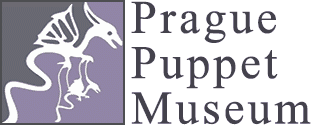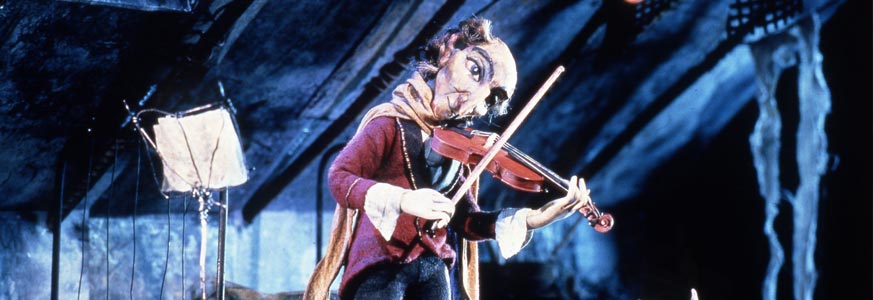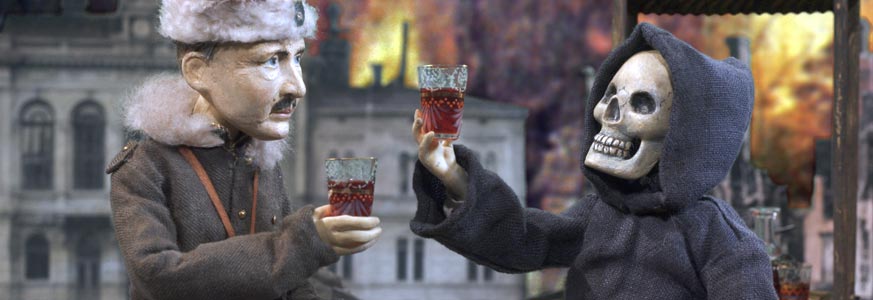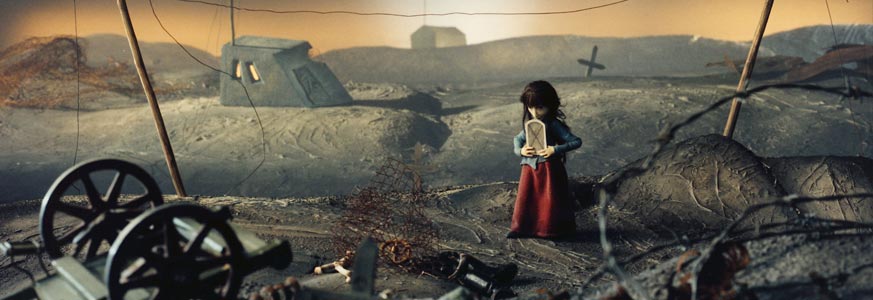Behind the Silver Screen:
a short history of the Museum of Puppet Arts & the exhibition of stop-motion animations in Prague.
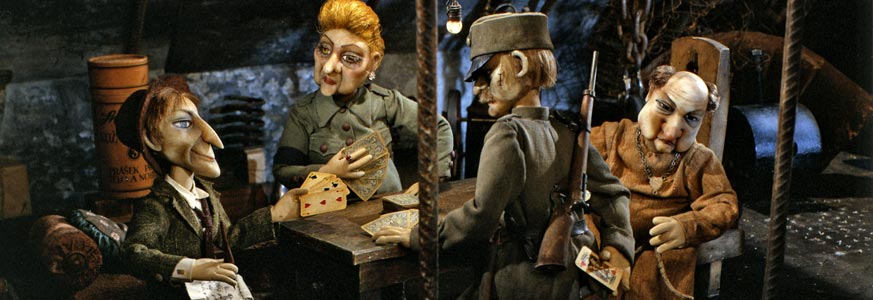
Museum of Puppet Art was founded in May 2013 mainly to collect, restore and renew the objects, working methods and traditions of puppet films and stop motion. As we are also interested in other puppet art genres, we wanted to keep it´s name open to all other forms as well.
It is owned and operated by the Finnish-Czech Film Cooperative Cagliostro, together with it´s local partner RosenbergPress s.r.o.
The exhibition of the Museum contains decorations, animation puppets, props and sketches from the past 30 years of Cagliostro´s Czech-connected production history.This unique collection is based on the materials from the films directed by Katariina Lillqvist, a Finnish-born scriptwriter, director and producer who started her career in the late 1980´s in the Studio Jiři Trnka in Prague. During these years, over 20 animated films were made here by her team, who has managed to stay together despite all the political, economical and technological changes of the challenging years of the post-socialistic society.
In the Museum, there is an animatheque with old stop motion classics, contemporary experimental art films, student works and much more. We are also cooperating with other galleries, clubs and cinemas in the neighborhood to create events, larger screenings, concerts, performances and joint exhibitions around Prague and the entire Czech Republic.
The museum is situated in an old Baroque house in Prague´s historical centrum, just few steps off the busy Narodni Trida street.
Czech tradition and the era of Jiři Trnka
Czech Republic has long traditions of puppet films and stop motion animations, starting from the dawn of the Czechoslovakian cinematography in the Twenties. Those days excellent experimental animations were made in the Barrandov studios of Prague and in the Zlin ateliers too in Moravia, mostly for commercial purposes. Some of these first masterpieces were already using the techniques of stop motion, like the well-known ads for the shoes of the Bata company made by the artists of Zlin.
In the late Forties, a young illustrator and puppeteer Jiři Trnka decided to experiment with stop motion films. Thus his first feature puppet film Špalíček (The Czech Year, 1947) was born. The film attracted international attention to Czech animation and was awarded at many festivals, including the Venice Film Festival.
Since 1948, the studios of Trnka began receiving subsidies from the government. They also moved into a beautiful house by the historical Bartolomějská street in the Prague Old Town, and during the next decade, a great number of masterpieces were born in these premises.
“Sen noci Svatojánské” (A Midsummer Night’s Dream, 1959), freely adapted from the play of William Shakespeare, is maybe the best known and most beloved film of Trnka. The puppets used in the film were not constructed from wood, but from a specially-made plastic, which allowed more detailed modeling of faces.
Throughout his career Trnka experimented with different animation techniques, from traditional cartoons in his first shorts to animation with shadow puppets. However, his preferred method, and the one that which gave him worldwide fame, was stop motion puppet film. His carved puppet characters were animated in complex sets with an expressive use of lighting, and in this manner he was able to realize the dream of Czech baroque artists to set their sculptures in motion.
Of puppet films Trnka said:
”Puppet films are truly unlimited in their possibilities: they can express themselves with the greatest force precisely when the realistic expression of the cinematographic image often faces insurmountable obstacles.”
Unlike what had been done before, Trnka chose not to alter the appearance of the dolls with artificial elements to denote their emotions but to keep it unchanged, getting his expression through changes in framing and lighting.
One of his closest colleagues, director Bretislav Pojar said :
“Trnka always gave his eyes a look indefinable. With the simple turn of their heads, or with a change of lighting, rose smiling expressions, or unhappy, or dreamers. This gave one the impression that the puppet hid more than it showed, and its heart of wood stored even more.”
Jiri Trnka died in 1969, but his films are immortal. With this little museum in Prague, we would like to show our deep respect not only to his memory, but to this rich and amazing tradition in general- and keep the puppets going on for some more years.
The Technology of Puppet Films and Stop Motion
The basic term “animation” comes from the Latin combination of the words “animō” and “ātiō” -the act of bringing something into life. And stop motion, as the independent branch of the many-shaped animation tree, is an art form, which creates movement and shapes changes, making a physically manipulated object appear to move on its own in the silver screen.
In the animation studio, the objects or puppets are carefully moved step by step by the animator, meanwhile the camera is capturing the changes with 24 frames per minute, thus creating the illusion of movement when the series of frames are later played to the viewer as an continuous sequence.
Making of a single puppet film is a long process which needs time, resources and patience.
It takes four to five people to complete one puppet. First the mechanic, who often has skills of a goldsmith or a restorer, makes a metal skeleton. On the same time, the head-maker starts to sculpt the puppet head from the ceramic material. Then the costumer makes clothes, latex master the hands, wig-maker the wigs and finally in comes the painter, giving the final touch to the character.
Meanwhile scenographers are drawing sketches for the sets and props, and after those are accepted, starts the concrete work of film carpenters, prop makers and decoration painters.
When all sets, props and fonds as well as the puppets are ready, it is time to start the shootings. Director works together with photographer, animator and other crew in the dark studio room, producing only some ten seconds of material per day, if everything goes well. During the bad days lamps get broken, puppet drops his hand or breaks it´s nose, and you have to start from the zero again, frame by frame, second by second.
